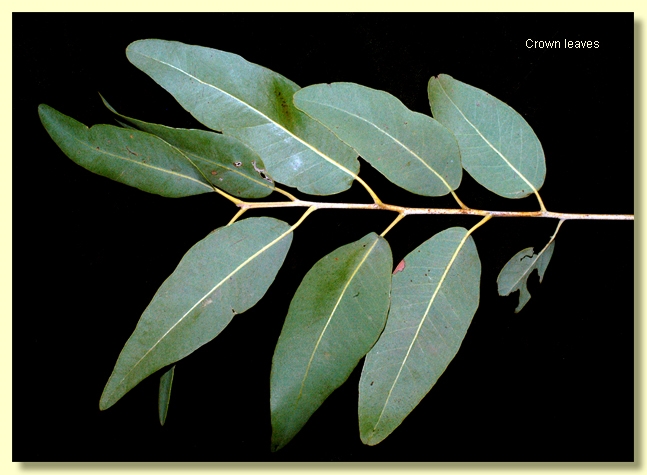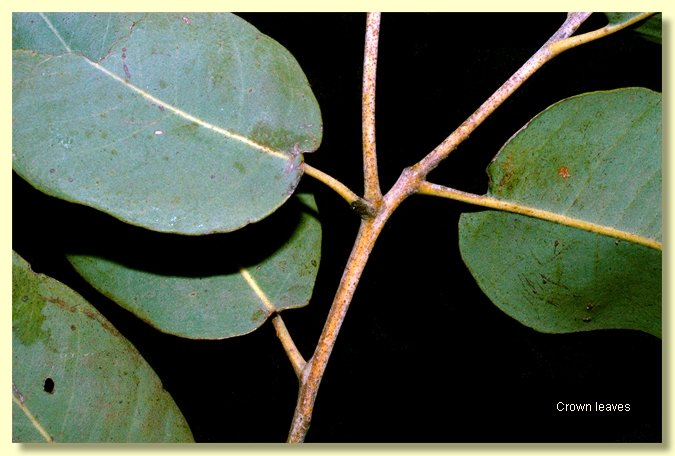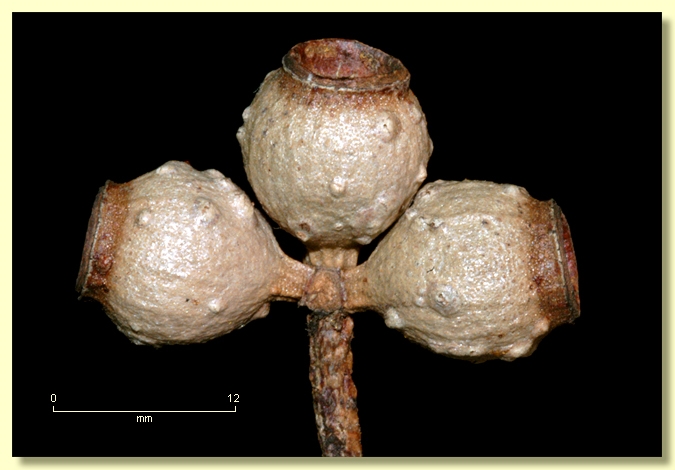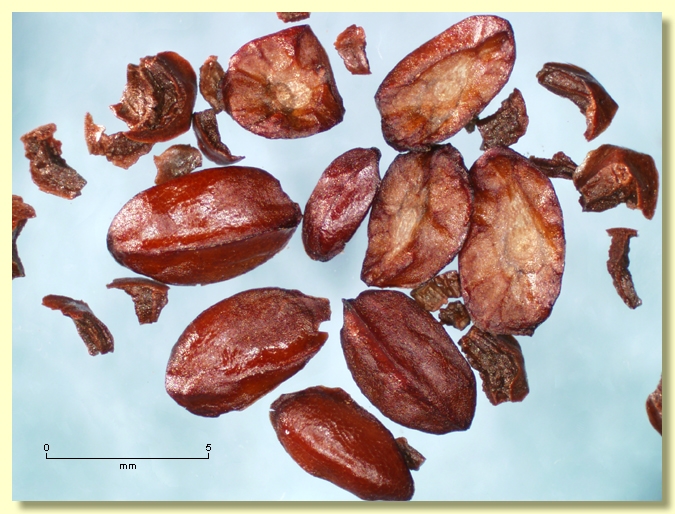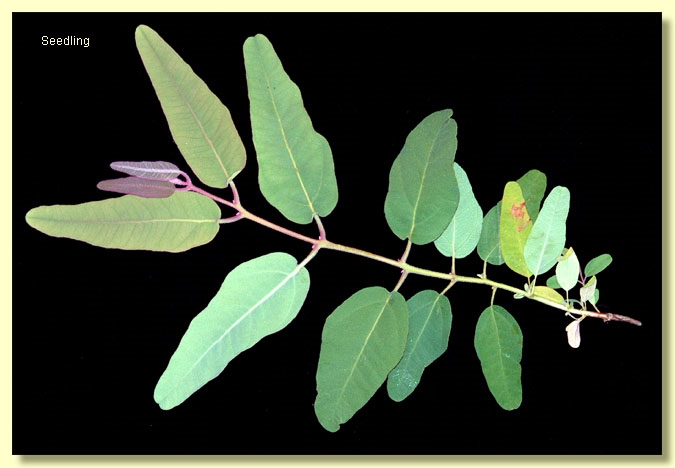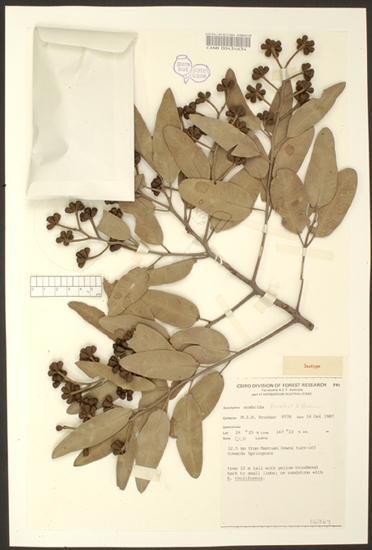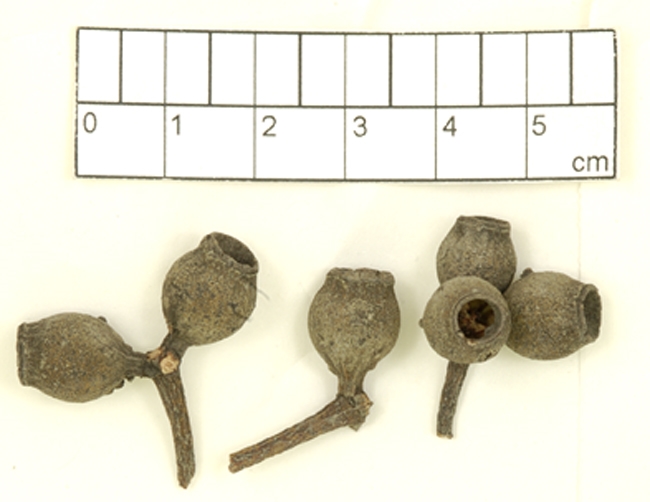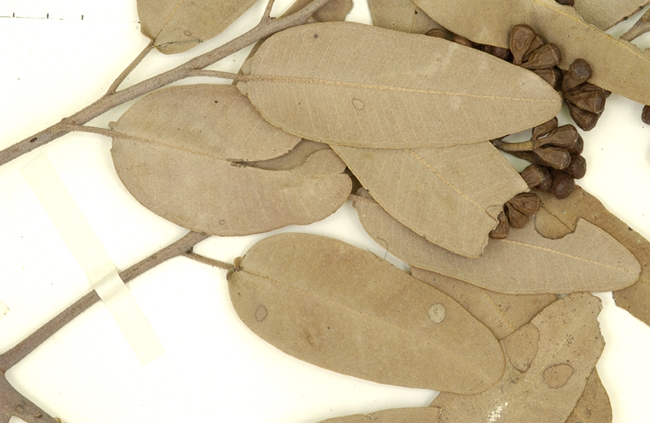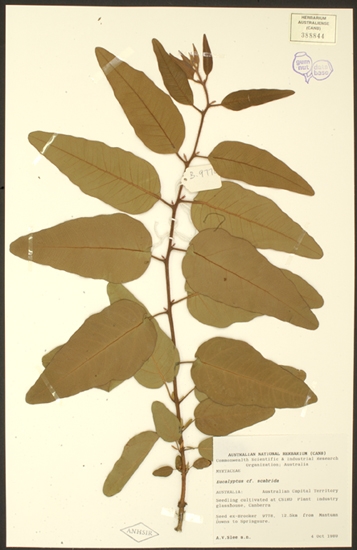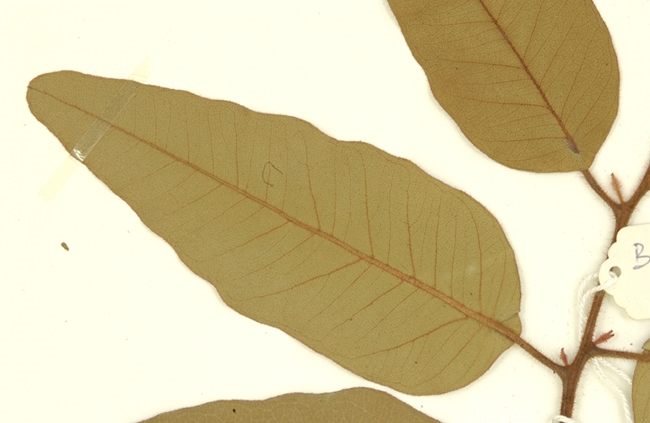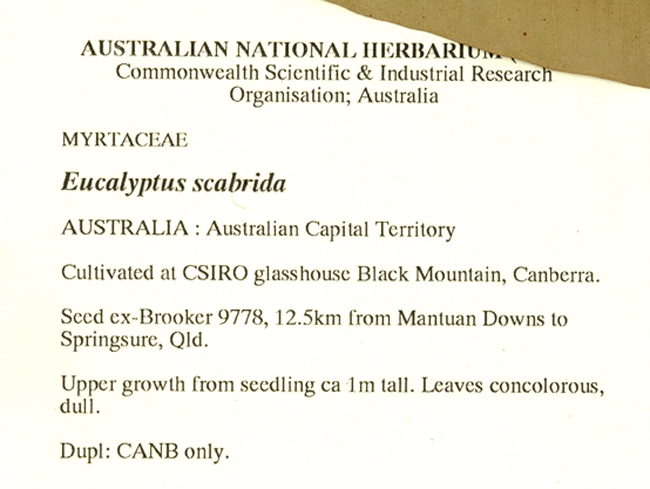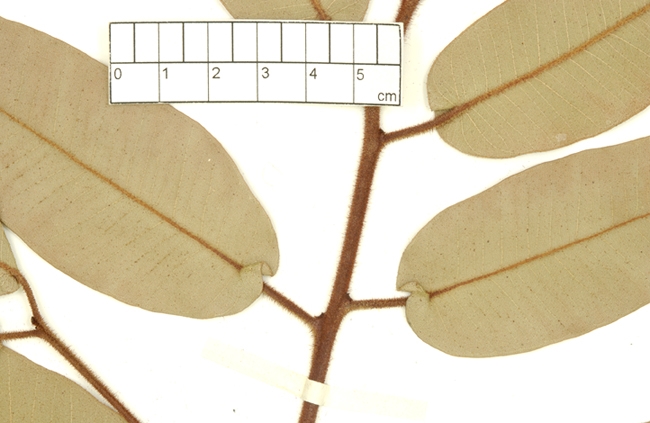Euclid - Online edition
Corymbia scabrida
Corymbia | Ochraria
Corymbia scabrida (Brooker & A.R.Bean) K.D.Hill & L.A.S.Johnson, Telopea 6: 382 (1995).
Tree to 18 m tall. Forming a lignotuber.
Bark rough throughout except for the smallest branches, thick, tessellated and finely flaky, yellow-brown with a hint of orange.
Branchlets scabrid with setae or their weathered remains; elongated oil bodies often present in the pith.
Juvenile growth (coppice or field seedlings to 50 cm): stem ± rounded in cross-section, setose becoming scabrid; juvenile leaves predominantly alternate, always petiolate, ovate-elliptic at first becoming ovate-lanceolate, 5–18.5 cm long, 4–5.5 cm wide, base peltate except at lowest nodes where rounded to truncate, green to grey-green, densely setose with bristle-glands, becoming scabrid as these weather.
Crown entirely of scabrid juvenile and intermediate leaves, predominantly alternately arranged, rarely a few pairs sub-opposite, petiole 0.8–1.7 cm long; blade usually lanceolate, sometimes ovate-elliptic to ovate, (5)6.5–12.5 cm long, (1.3)2–3.5(4.8) cm wide, flat or undulate, base of most leaves peltate, rarely rounded to tapering to petiole, apex rounded or pointed, margin entire, concolorous, dull, grey-green, penniveined, densely to very densely reticulate, intramarginal vein parallel to and just within margin, oil glands island or obscure.
Inflorescence terminal compound, peduncles 0.9–2.6 cm long, buds 7 per umbel, sessile or pedicellate (pedicels 0–0.3 cm long). Mature buds obovoid, ca 0.7 cm long, 0.6 cm wide, shiny green or sometimes white on surface due to rubbery cuticle (not wax), scar present (outer operculum shed early), operculum rounded to flattened and umbonate to apiculate, or conical, stamens inflexed, anthers ± oblong, versatile, dorsifixed, dehiscing by longitudinal slits (non-confluent), style long, stigma blunt and shortly papillose, locules 3, the ovules arranged in 5 ± clear vertical rows on the placentae. Flowers white.
Fruit sessile or very shortly pedicellate (pedicels 0–0.3 cm long), barrel-shaped to urceolate or truncate-globose, 0.8–1.3 cm long, 0.8–1.1 cm wide, disc descending, valves 3, enclosed.
Seeds brown to reddish brown and shiny, 2.5–6 mm long, boat-shaped with a keel on the smooth and usually cracked dorsal surface, not winged but some seed have a short flange at one end, hilum ventral.
Cultivated seedlings (measured at ca node 10): cotyledons large reniform to orbicular; stems rounded in cross-section, setose throughout; leaves always petiolate (to 1.6 cm), opposite for lower 5 to 10 nodes then becoming alternate, ovate-lanceolate, 7.5–11.5 cm long, 3–5 cm wide, base rounded until node 3–6 then peltate and persisting so, margin entire or irregular, apex rounded to pointed, more or less concolorous, dull, green, setose throughout.
Flowering has been recorded in October.
A yellow bloodwood tree endemic to central Queensland from west of Springsure towards Tambo, especially in the Mantuan Downs area, where it is a component of open woodland on sandstone rises and flat-topped hills where soil is sandy and shallow. Corymbia scabrida is fully rough-barked with typical yellow bloodwood type of thick yellowish flaky to tessellated bark. The crown is grey-green and entirely of scabrid (sandpapery) petiolate leaves that are predominantly peltate, i.e. the petiole inserts into the blade at some distance from the leaf margin. Inflorescences are terminal to the branchlets and fruit are small.
C. scabrida has a restricted distribution that generally abuts that of C. leichhardtii at that species southern limits. The latter species has a crown entirely of normal petiolate lanceolate adult leaves that are alternate, glabrous, dull and green to grey-green, whilst C. scabrida, as the name suggests, has a crown of retained juvenile to intermediate scabrid leaves with peltate petiole insertion into the lamina. Much further to the north C. peltata occurs. This species also has a crown of mostly or entirely peltate, setose juvenile leaves, but differs from C. scabrida in that the crown leaves are ovate to orbicular and 3.5–11 cm wide, whilst those of C. scabrida are ovate-lanceolate and usually < 3.5 cm wide (rarely to 4.8 cm wide).
MORE ABOUT CORYMBIA
MORE ABOUT YELLOW BLOODWOODS
Corymbia scabrida: Latin scabridus, somewhat scabrid or sandpapery, referring to the leaves at all stages of growth.




